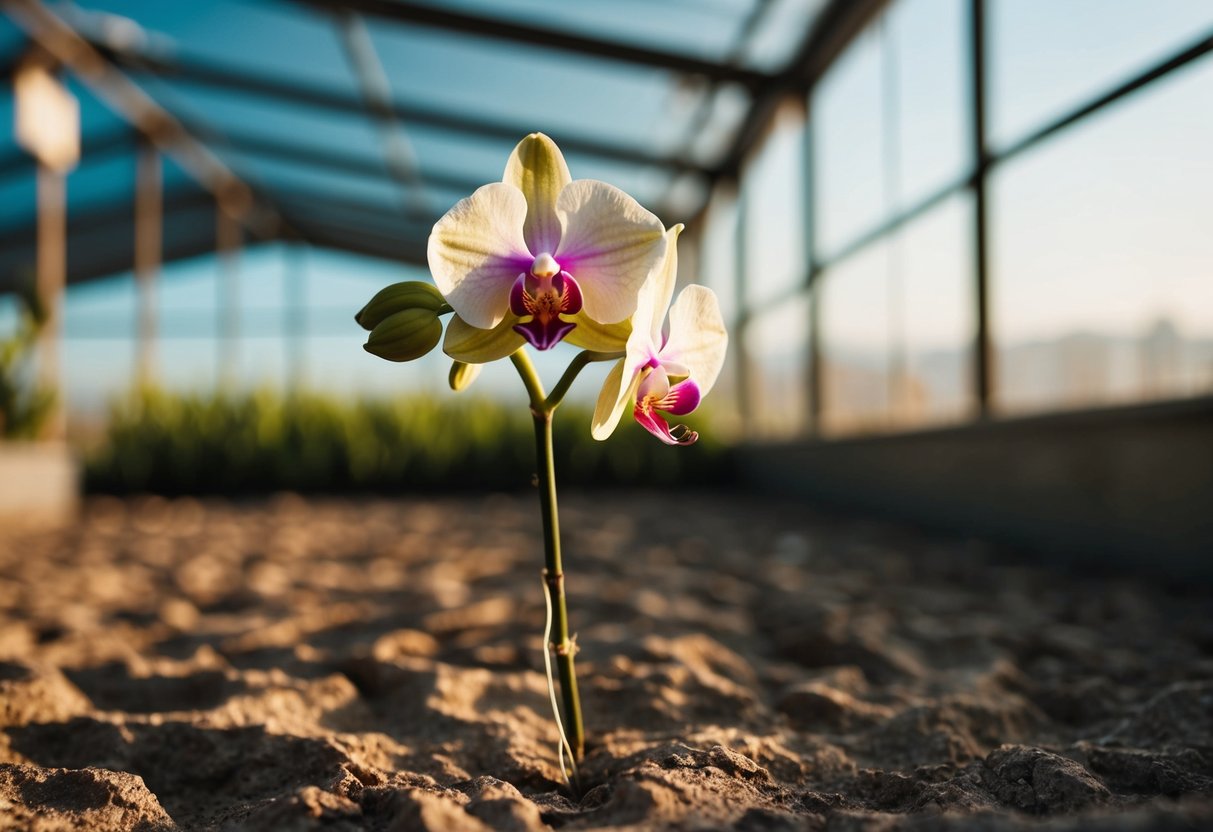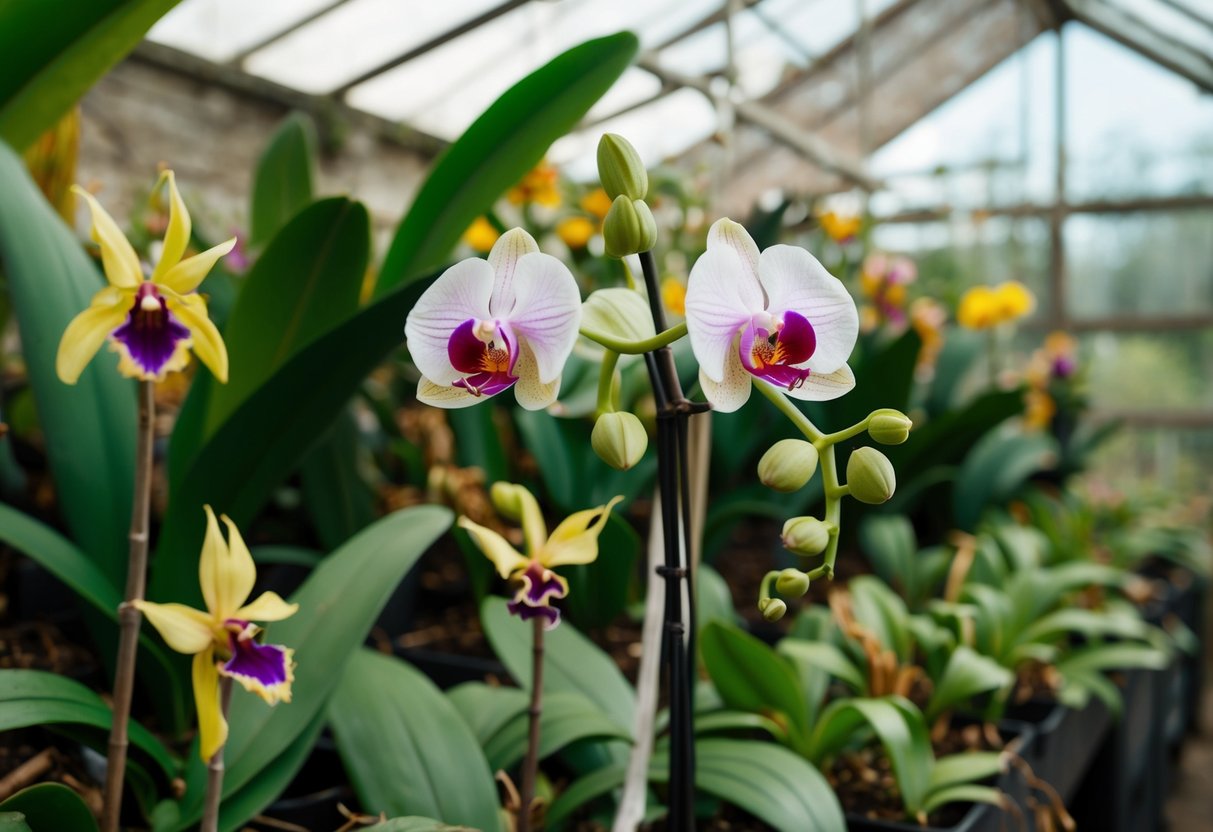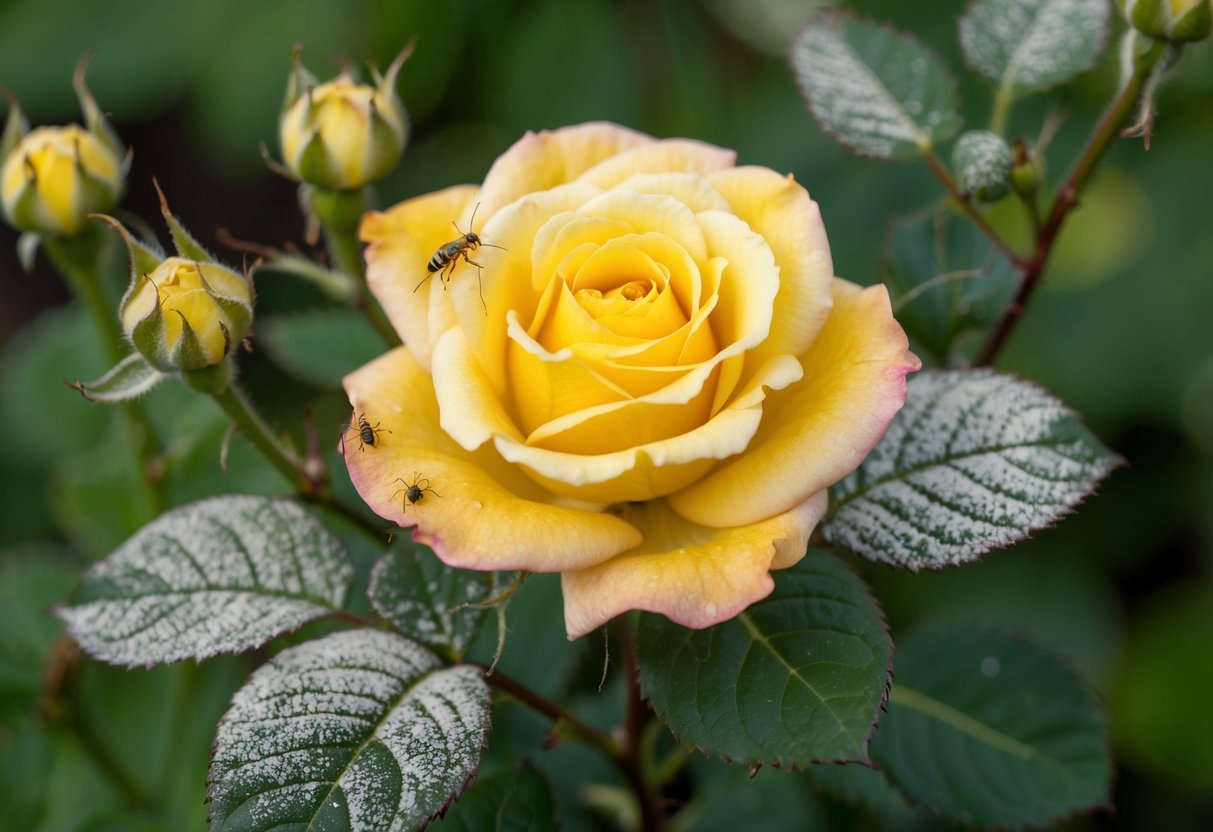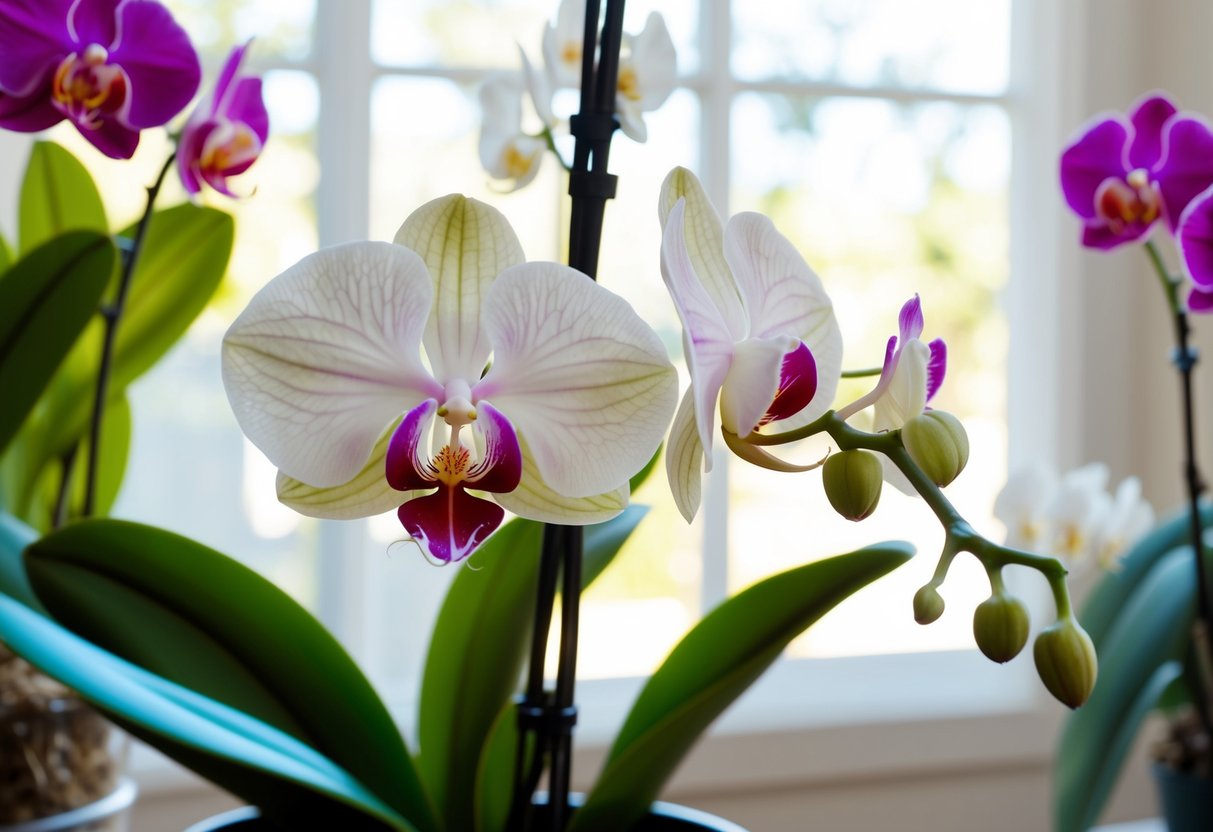What Flower is Hardest to Grow? Tips for Aspiring Gardeners
When it comes to gardening, you might find yourself asking which flower is the hardest to grow. The gardenia, with its beautiful fragrance and delicate blooms, often tops the list of challenges for plant enthusiasts. These flowers require specific conditions to thrive, such as adequate sunlight, humidity, and precise watering.

Taking on the challenge of growing difficult flowers can be a rewarding experience. You’ll learn a lot about meticulous care and patience, whether you’re tackling the finicky gardenia or other challenging blooms like orchids and azaleas. These flowers might test your skills but can also add unique beauty to your garden.
You’ll likely enjoy the journey and the sense of accomplishment when you finally see these difficult flowers bloom. Exploring the complexities of growing such delicate plants can deepen your appreciation for the art of gardening, making every success special.
Challenges in Cultivating Delicate Blooms

Growing delicate flowers can be quite a challenge, often requiring specific climate conditions, soil qualities, and watering practices. You’ll need to pay close attention to their sun requirements, soil needs, and humidity preferences to help them thrive.
Climate Considerations and Sun Requirements
Delicate blooms like orchids and gardenias often require specific climates. Many of these flowers thrive in warm conditions with plenty of humidity. You’re likely to have success if you ensure they get enough sunlight. Full sun is essential for many flowers, but some, like gardenias, benefit from indirect light in hotter climates.
Read carefully about the exact sun requirements for your flower. Too much direct sun can cause damage, while too little light might inhibit blooming. If you’re in a less sunny area, consider using grow lights to supplement natural sunlight. With the right arrangements, your blooms can flourish harmoniously in their environment.
Soil Quality and Nutrient Management
Soil is the foundation of a healthy flower. Most delicate flowers prefer well-drained soil and often thrive in slightly acidic soil. You will want to regularly test your soil’s pH to meet their specific needs. Adding organic matter like compost or mulch can improve nutrient content, helping your plants get essential nutrients like nitrogen and phosphorus.
The right soil type can prevent root rot and allow your delicate flowers to absorb the moisture they need. You might need to adjust the soil quality through treatments to make sure it stays well-drained and rich in nutrients. Keep an eye on your plants and adjust as needed to provide ideal growing conditions.
Watering Practices and Humidity Control
Proper watering and humidity control are essential for fragile flowers. While some may display drought tolerance, most require consistently moist conditions without being waterlogged. Water your flowers at the base, allowing the soil to dry slightly between waterings to prevent root rot.
Using tools like a hygrometer, you can measure humidity levels, maintaining a suitable range between 40% and 70% for optimal growth. You can increase humidity by using a humidifier or placing a tray of water near the plants. Balancing irrigation with the right humidity ensures that your delicate blooms remain healthy and vibrant.
Identifying the Most Demanding Flowers

Growing some flowers can be tricky, but the reward can make it all worthwhile. This section explores the challenges and characteristics of specific flowers known for being tough to cultivate, like gardenias, orchids, dahlias, and delphiniums.
Gardenia Woes
Gardenias are beautiful evergreen shrubs that can fill your garden with a delightful scent. Though they are lovely, they are also known to be quite challenging to grow. These flowers thrive in warm climates and require acidic soil with good drainage. Ensuring they get the right amount of water is crucial, as both overwatering and underwatering can cause problems like root rot and leaf yellowing.
They are prone to pests like aphids and spider mites, which can be tough to manage. Consistent care and attention to detail are essential to keep your gardenias healthy. Fertilizing with an acid-based fertilizer can help keep the soil conditions just right.
The Finesse of Orchids
Orchids, renowned for their exotic appearance, come with a reputation for being difficult. There are over 25,000 species, each with its particular needs, but the elegance they bring to a space can make it worth the effort. Most orchids need a specific humidity level and indirect light to thrive.
They often grow best in an orchid mix rather than traditional soil. Watering should be done with care, usually once a week, allowing the roots to dry out between waterings. Monitoring the air circulation around them is essential to prevent diseases. With patience and dedication, you can enjoy the unique bloom of orchids.
Dazzling but Fussy Dahlias
Dahlias are stunning flowers that can bring a pop of color to your garden. Yet, they are known for being picky about their growing conditions. Dahlias require full sun and fertile, well-drained soil. Plant them once the risk of frost has passed, as they are sensitive to cold.
The tubers need to be planted at the right depth, about 4-6 inches. Ensuring sufficient water without overwatering is key since soggy soil can lead to rot. Staking the taller varieties helps support their growth. Regular deadheading can encourage more blooms, but it’s labor-intensive. With proper care, dahlias can flourish and brighten your garden.
The Delicate Nature of Delphiniums
Delphiniums are admired for their tall spikes of vibrant flowers but can be quite demanding. They thrive best in cool, mild climates and need rich, well-draining soil. Planted in a spot with full sun in the morning and shade during the hottest part of the day, delphiniums can really shine.
These flowers are sensitive to strong winds and may need staking to keep them upright. They also require frequent feeding with a balanced fertilizer to encourage growth. Keeping a close watch for pests and diseases is also crucial in maintaining healthy delphiniums. With a bit of extra work, you can enjoy their stunning blooms.
Pest and Disease Control

Dealing with pests and diseases is crucial for growing healthy flowers. By addressing fungal and rot issues and keeping pests away, you can improve your plants’ chances of thriving.
Fighting Fungal and Rot Issues
Fungal diseases can be a major headache for gardeners. Flowers like gardenias can suffer from root rot and rhizome rot. These occur when the soil stays too wet, leading to rotting roots.
To combat these problems, ensure good drainage by planting in well-drained soil and using containers with holes.
You might also try watering your plants in the morning. This allows the soil to dry throughout the day. Using fungicides can also help, especially in damp conditions. Applying them regularly can reduce the risk of infections.
Another tip is to keep your plants spaced out. This improves airflow between them, reducing moisture buildup that can lead to fungal growth.
Keeping Pests at Bay
Pests like aphids, spider mites, and borers can wreak havoc on flowers. They can damage leaves, stems, and even the roots.
To keep these pests at bay, regularly inspect your plants for signs of trouble. Look for discolored leaves or little webs that signal infestations.
Using insecticidal soap can be effective against soft-bodied insects like aphids. For tougher pests, natural remedies like neem oil work well. It deters many insects without harming beneficial ones.
Another strategy is introducing beneficial insects like ladybugs. They feast on pests that can harm your plants. By creating a welcoming environment for these natural predators, your garden remains healthy and balanced.
Planting for Pollinators

Creating a pollinator-friendly garden can make your outdoor space a haven for beautiful creatures like delicate hummingbirds and essential insects. By choosing specific flowers, you can support pollinator health and enjoy a vibrant ecosystem in your garden.
Attracting Delicate Hummingbirds
Hummingbirds are drawn to bright, tubular-shaped flowers. Zinnia and echinacea are fantastic choices because their colors and shapes naturally invite these lively birds. You might also want to plant some cosmos or marigold, known for their appealing colors and nectar richness.
Consider using native plants in your garden, as they adapt well to your local environment. This means you’ll provide better resources for hummingbirds. Arrange these plants in clusters to make your garden more inviting and allow easy access for the birds.
Water sources are important too. Adding a birdbath or a shallow water fountain can make your garden even more attractive to hummingbirds. Keep it fresh and clean to ensure a healthy and lively visit from your feathered friends.
Flowers That Benefit Pollinator Health
Planting the right flowers can boost pollinator health by providing nectar and pollen throughout the growing season. Lavender, though not a flower in the traditional sense, is highly attractive to bees, providing them with nectar while also warding off unwanted insects.
Echinacea and zinnia are great for supporting bee and butterfly populations, giving them nourishment and helping them thrive. These flowers are easy to cultivate and offer long-lasting blooms that keep pollinators visiting your garden.
Ensure you have a variety of plants that bloom at different times. This staggered flowering can sustain pollinators during the spring, summer, and fall, keeping your garden buzzing with life. You can make a significant impact by simply choosing the right mix of plants.
Maintenance Tips for Healthy Flowers

Caring for flowers requires attention to several details, such as air circulation and avoiding common gardening errors. Keeping these in mind will help your plants thrive.
Ensuring Proper Air Circulation
Air circulation is vital for healthy flowers. It helps prevent diseases like mold and mildew. Make sure your garden layout allows for enough space between plants. Crowded plants block air movement, which can lead to problems.
Choose a location that receives direct sunlight during the day. Sunlight helps flowers grow strong and reduces the chances of frost damage. If you have a mix of low-maintenance and more delicate flowers, consider planting the resilient flowers like rudbeckia, which are great in full sun. This way, even if some blooms are damaged by frost, others will thrive.
If your flowers are in containers, rotate them regularly to ensure balanced growth and even exposure to sunlight. This practice also helps with air movement. Use fans or natural breezes in enclosed areas, like greenhouses, to maintain airflow.
Avoiding Common Gardening Mistakes
Avoiding mistakes can make a huge difference in your flower garden’s success. One common error is overwatering. Consistently check the soil moisture and only water when necessary. Overwatering can cause root rot, especially in containers.
Another mistake involves the choice of soil. Well-drained soil is essential for growing healthy flowers. Mulching can help retain moisture and suppress weeds but ensure it’s not too thick, as this can suffocate roots and block air.
Mix low-maintenance flowers with more difficult ones to reduce effort while maintaining color and vibrancy. Picking the right plants will let you enjoy a beautiful garden without too much hassle.







